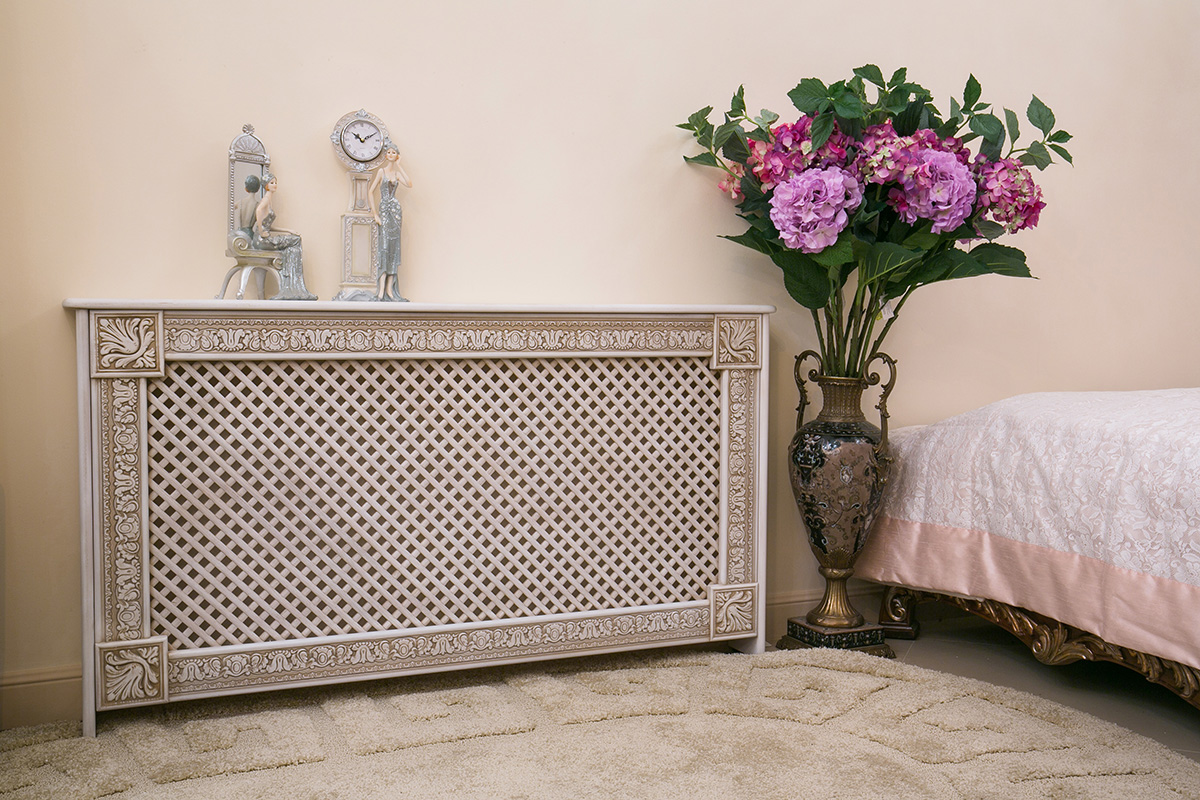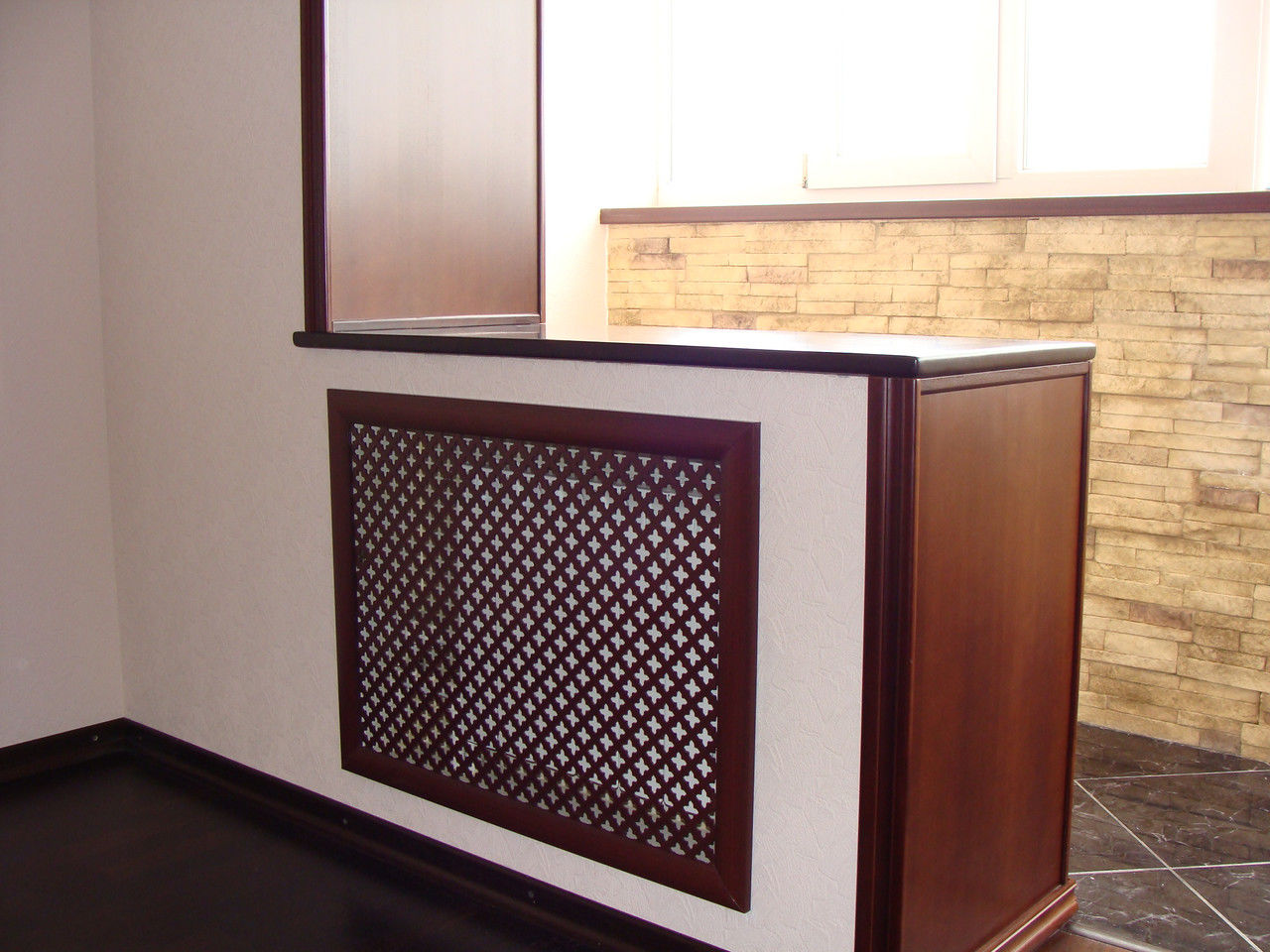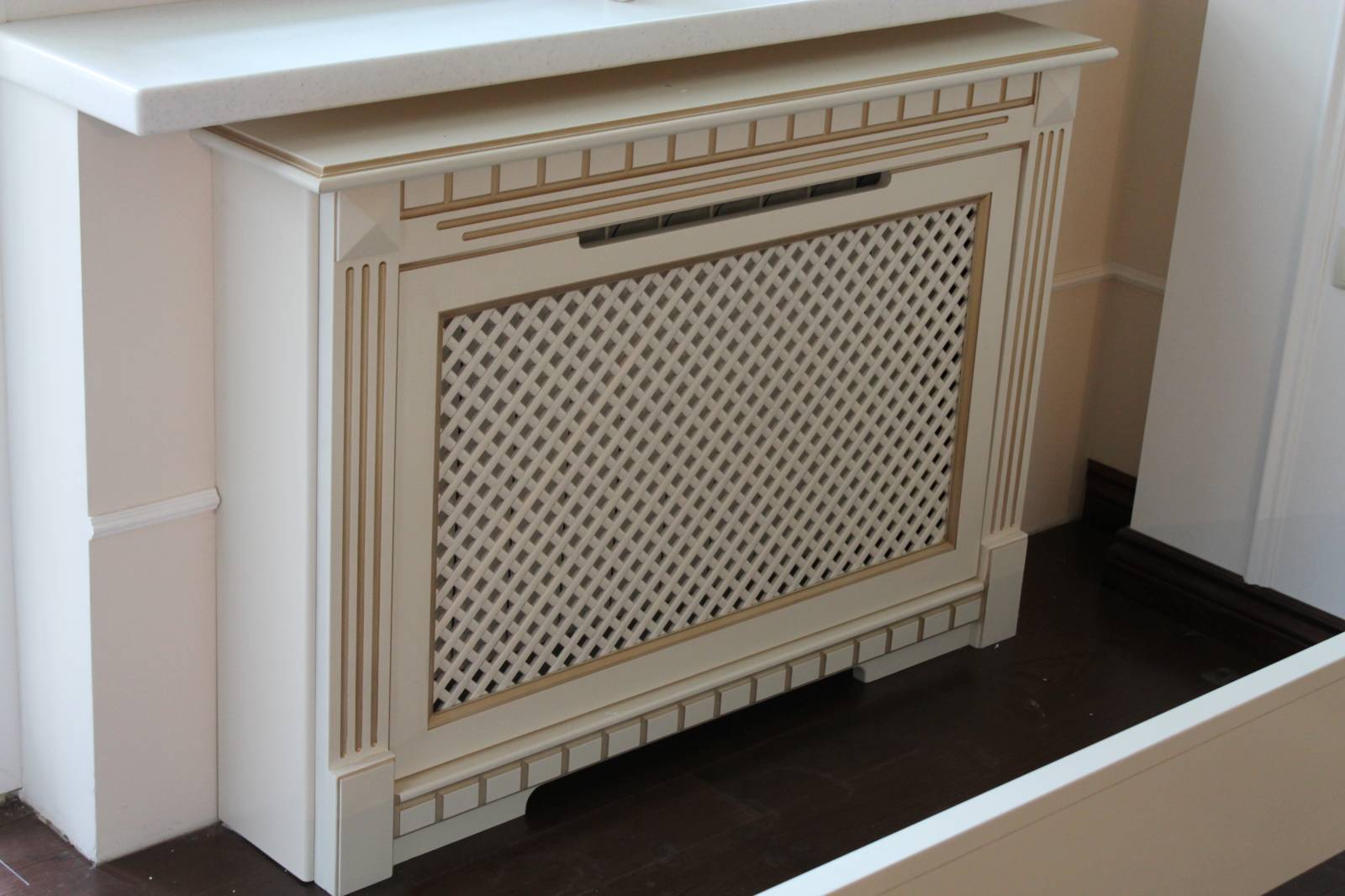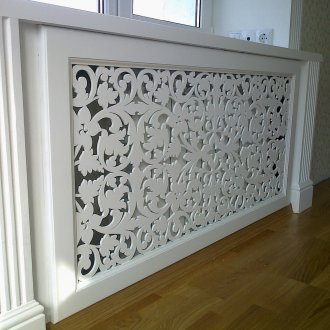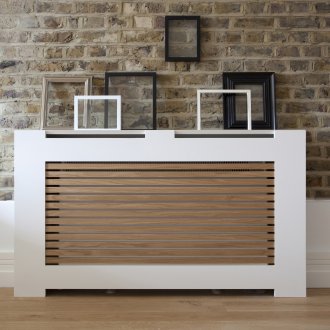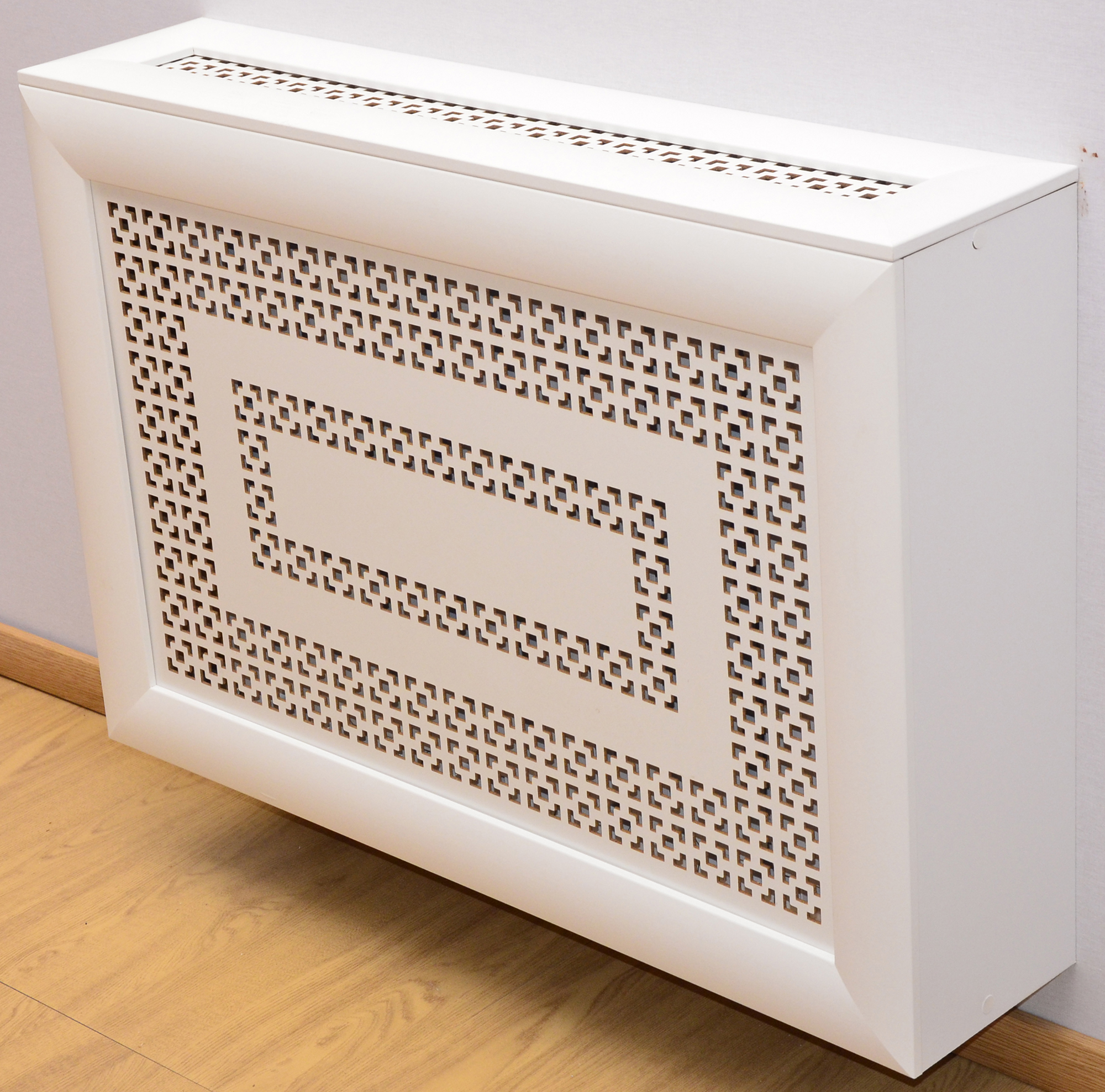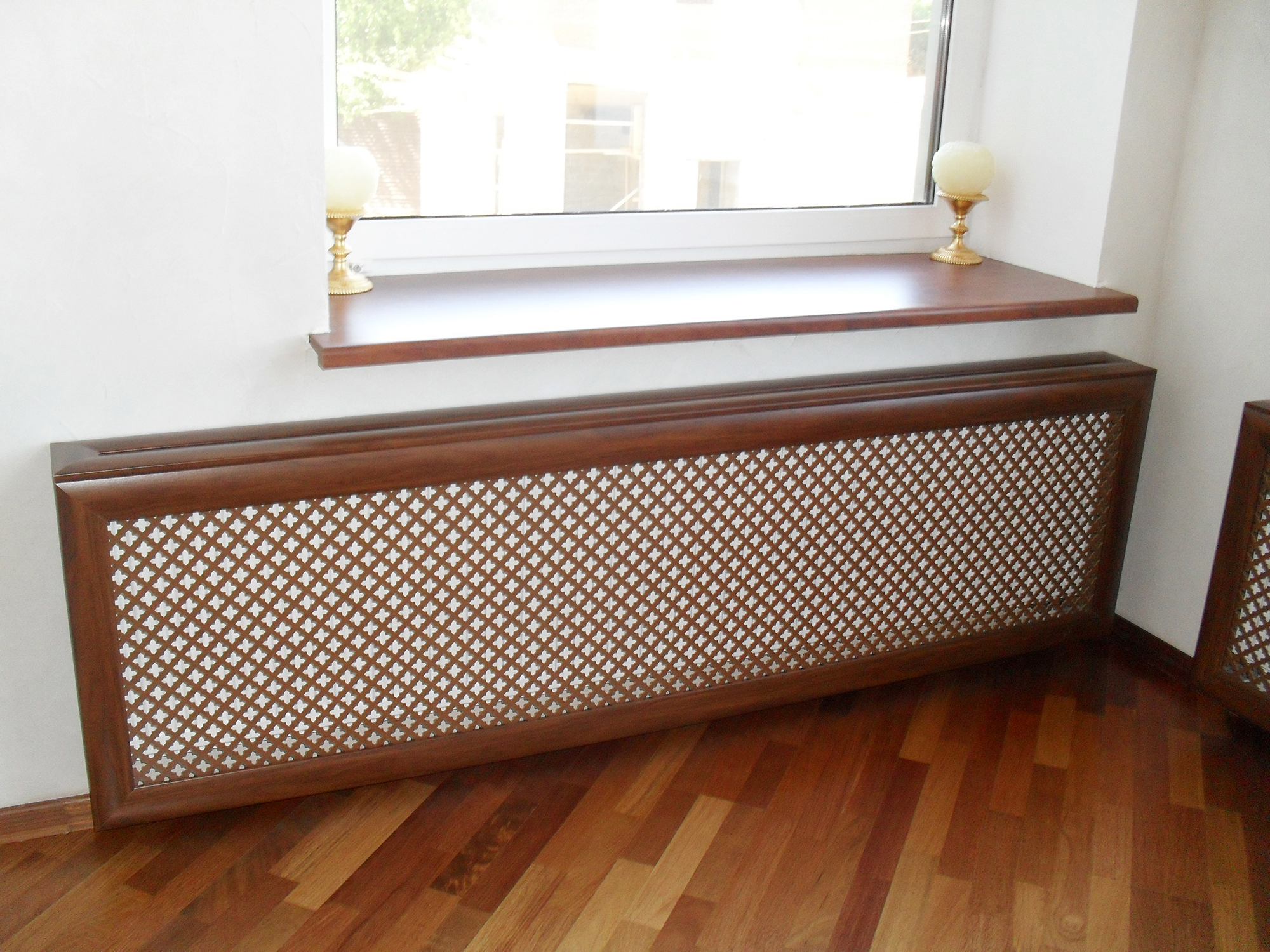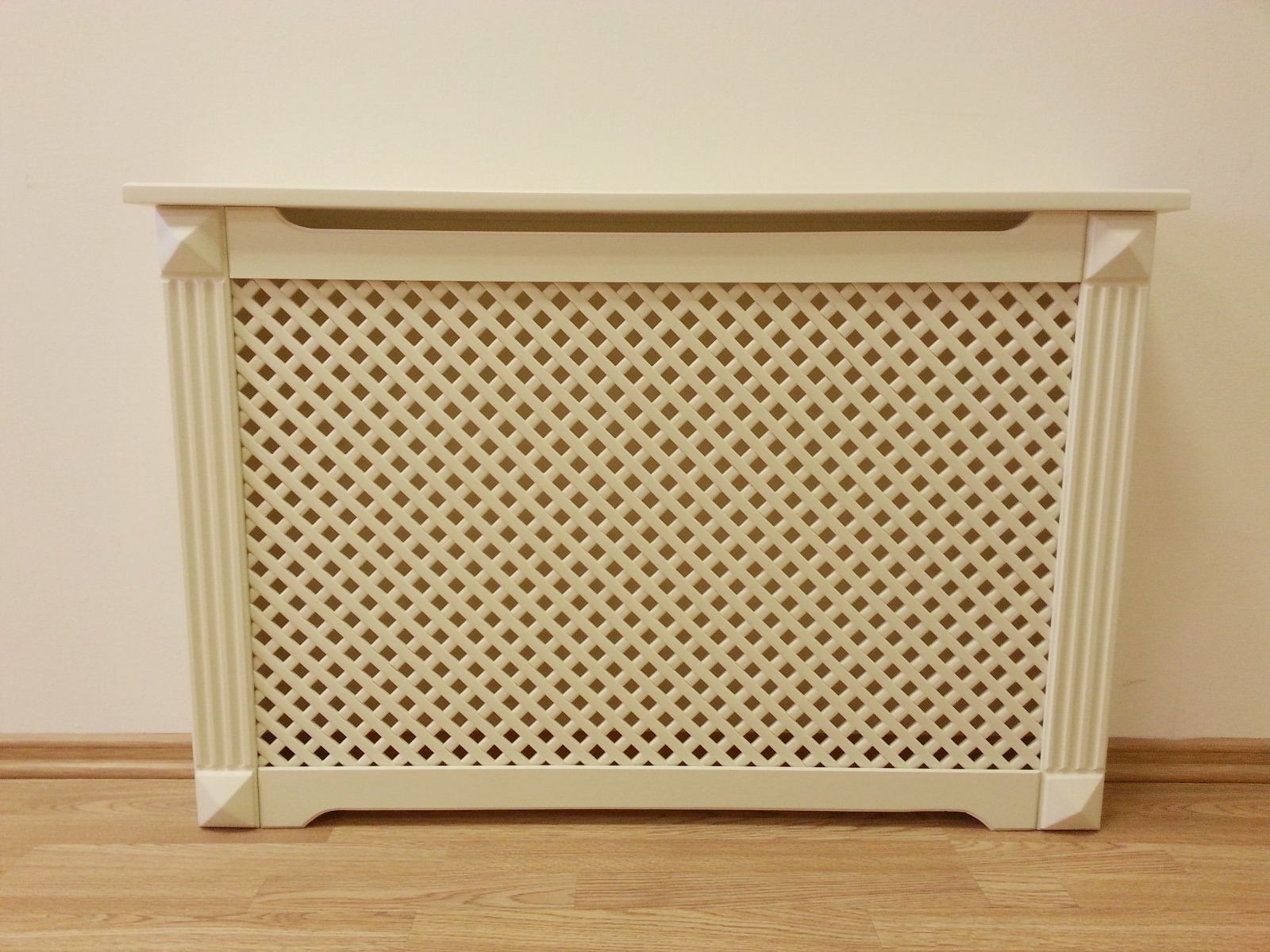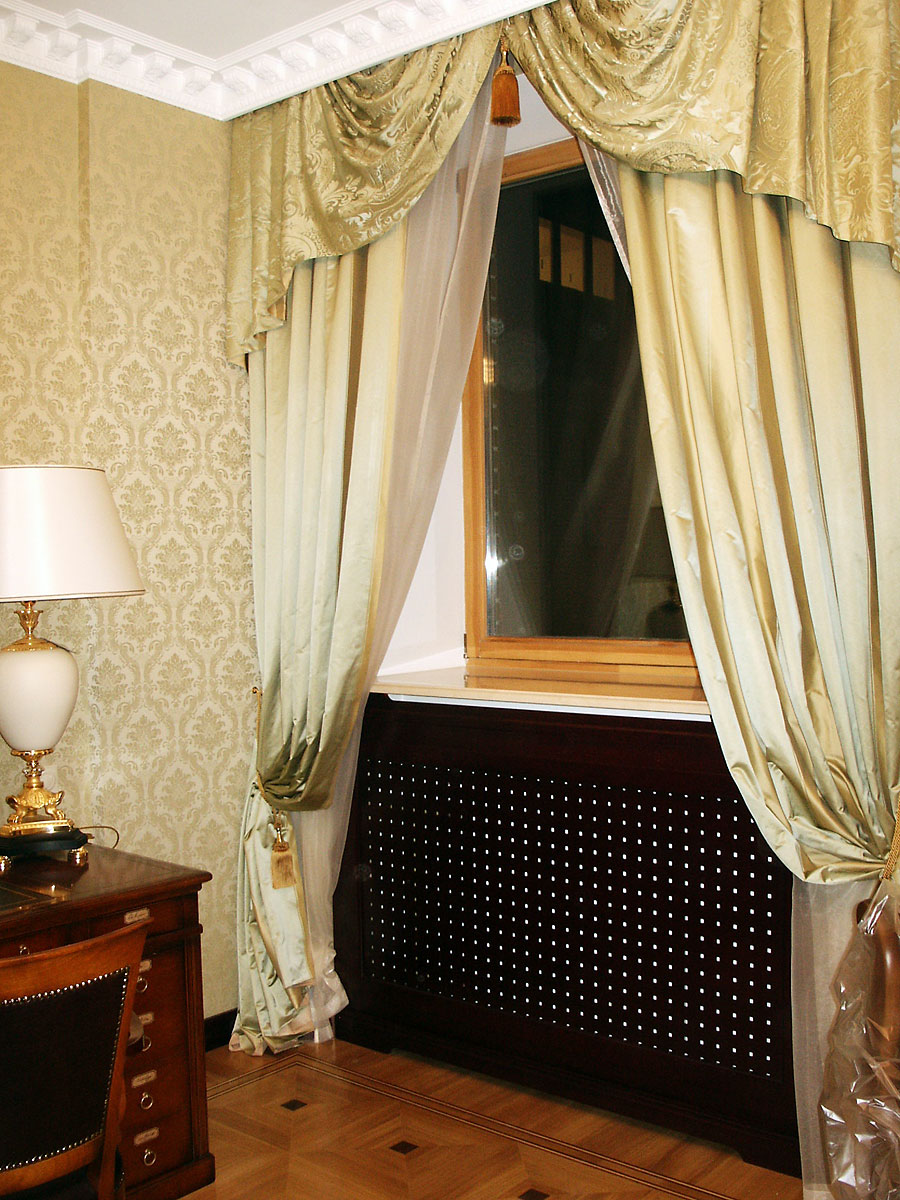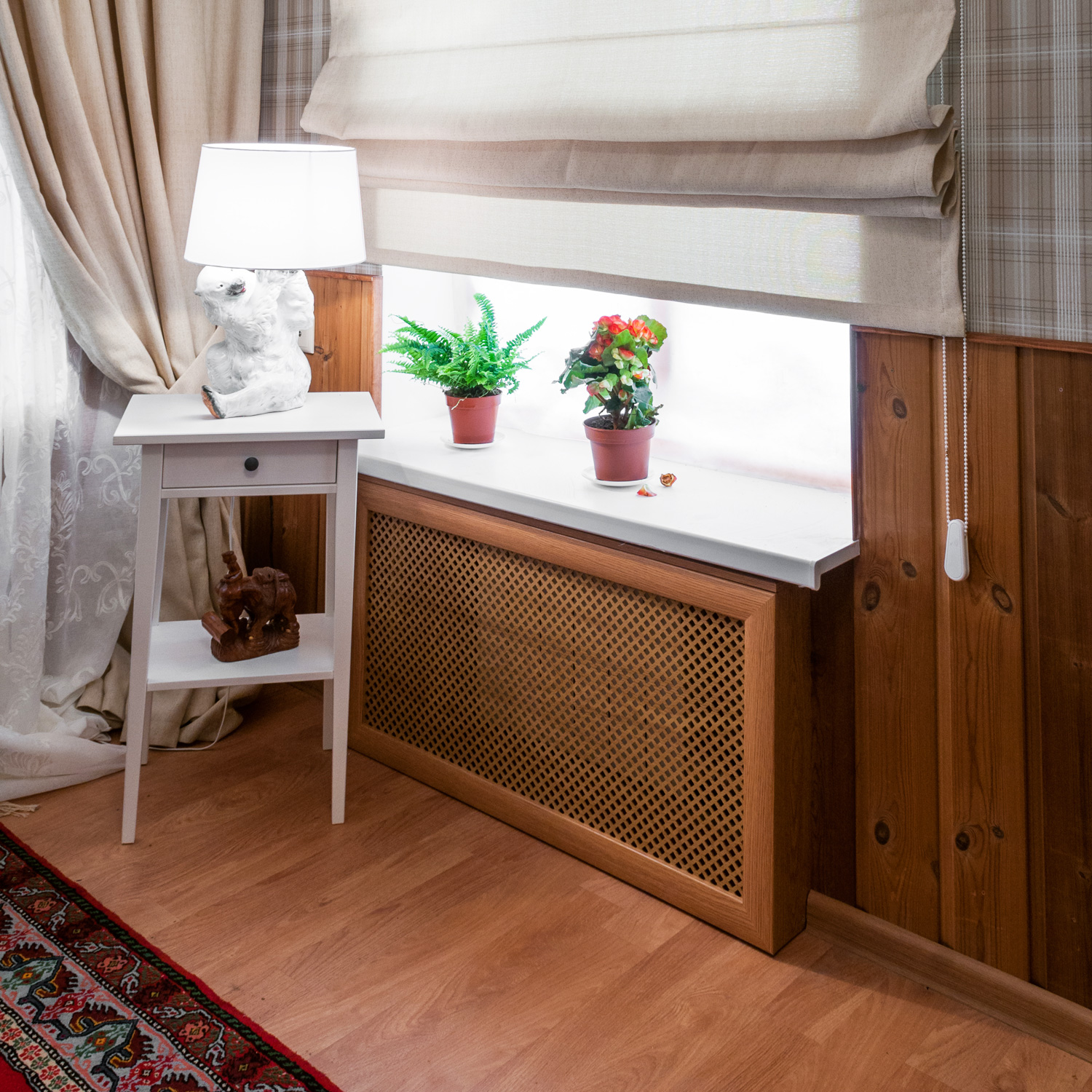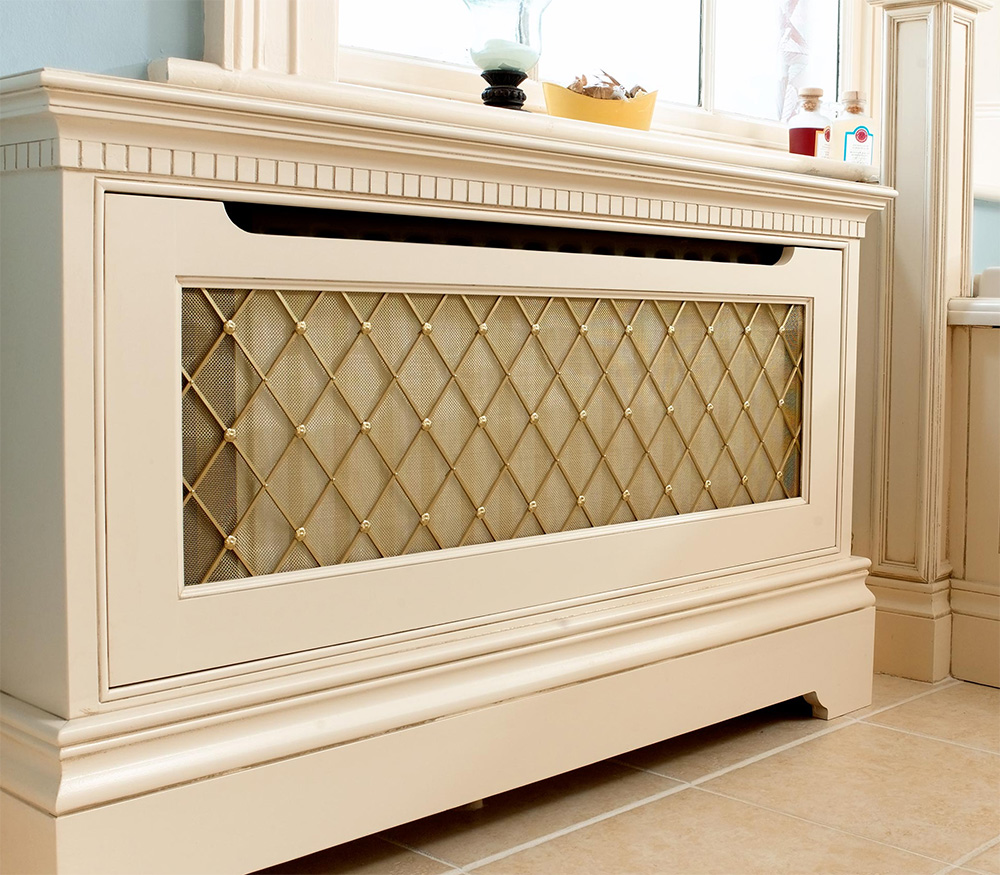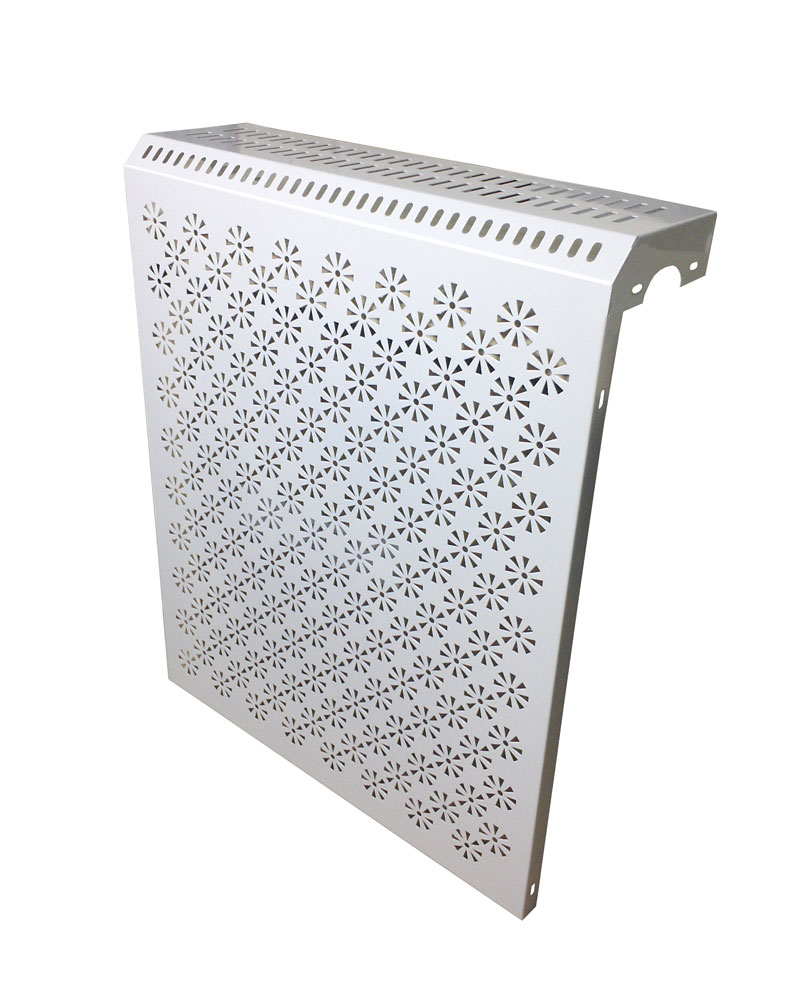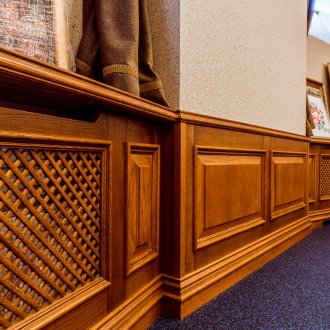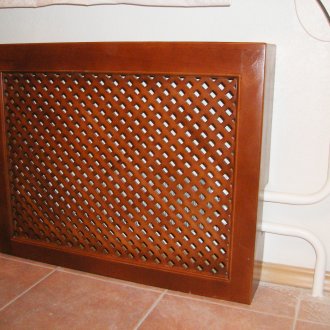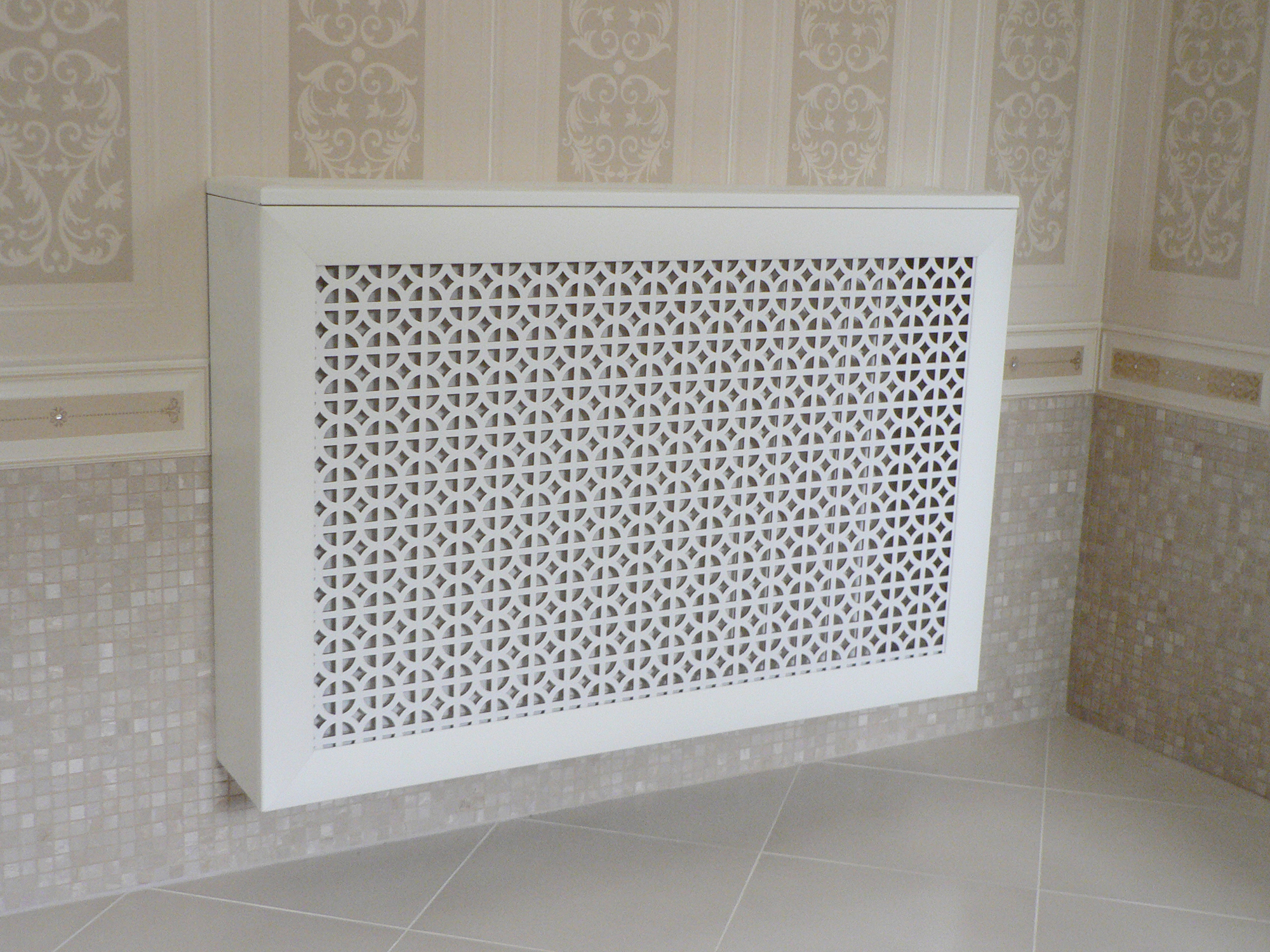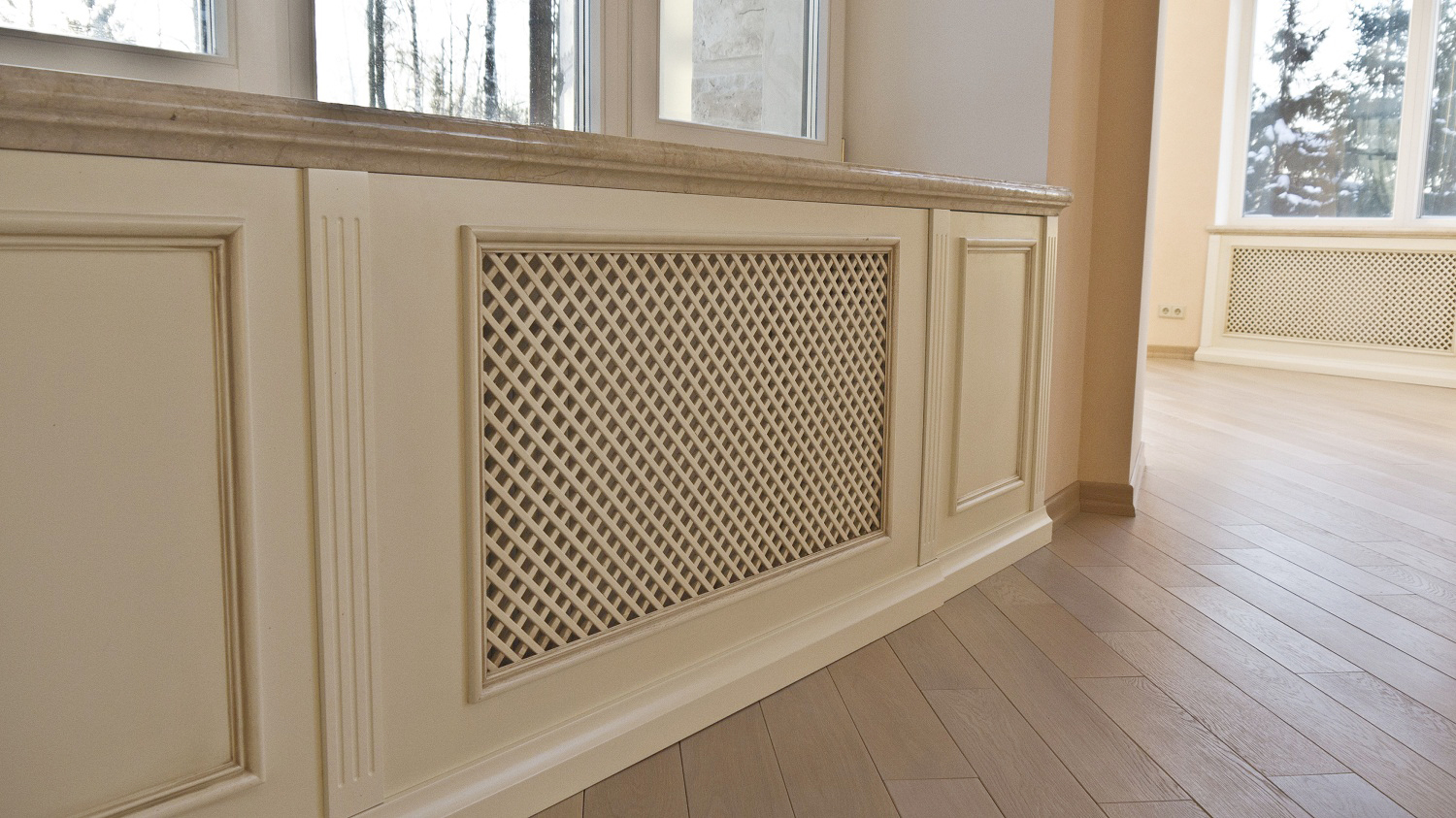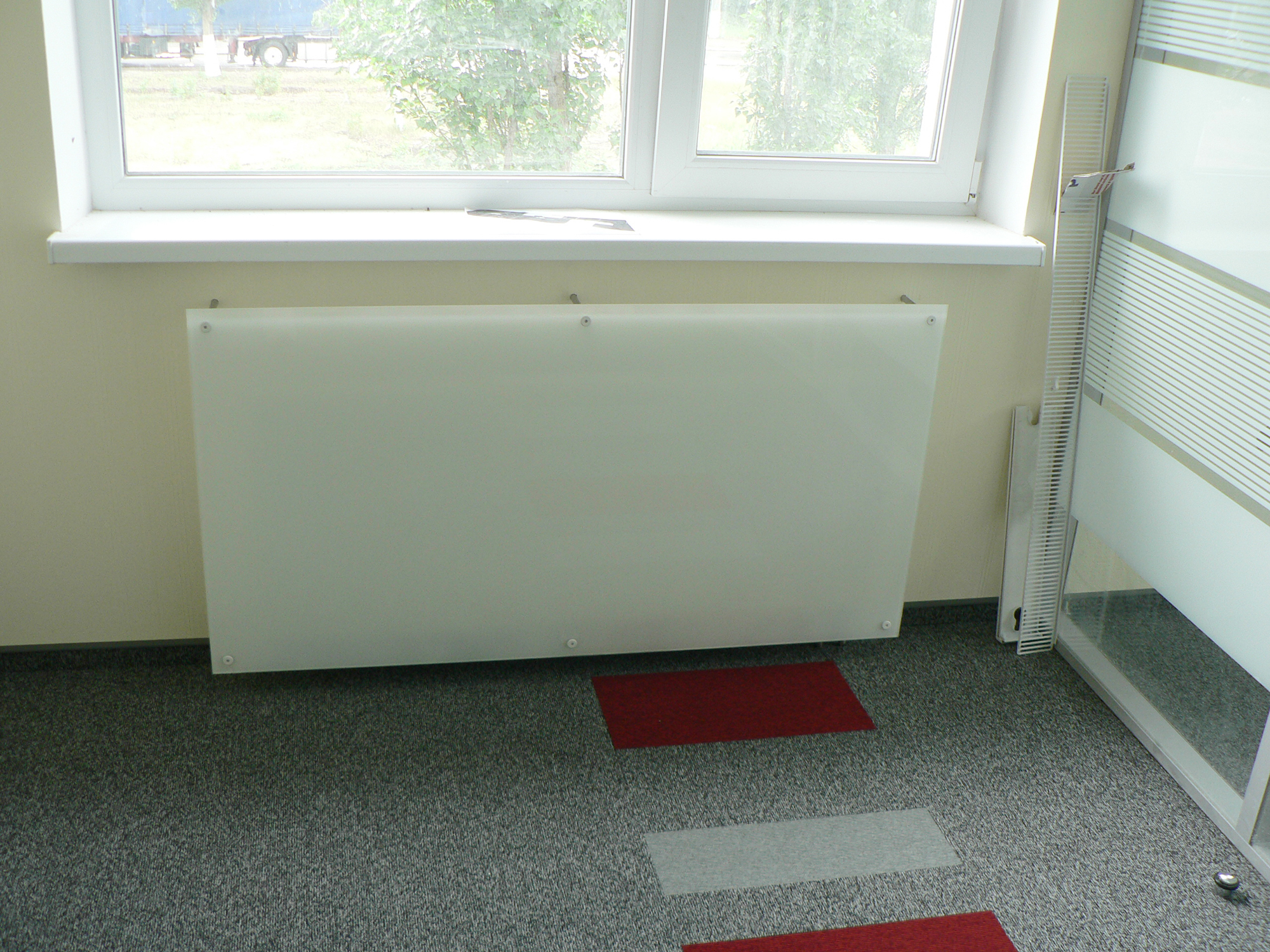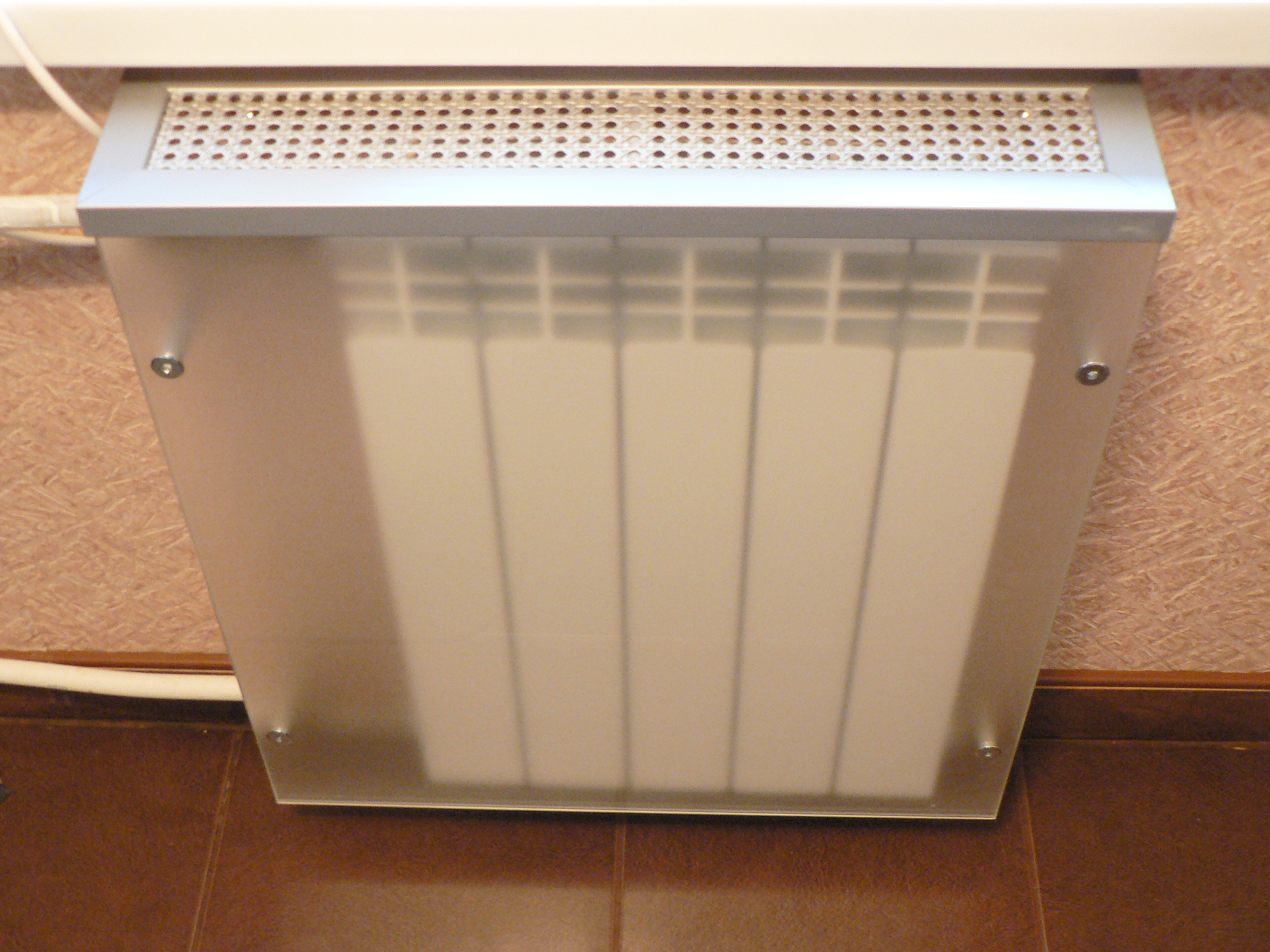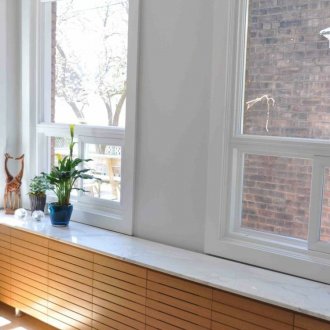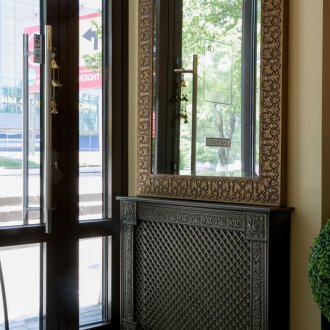Screen on the battery (20 photos): examples of execution in the interior
Content
Old Soviet heating batteries have a rather long service life, and even when it ends, radiators continue to perform their intended purpose well. The only unpleasant moment is a noticeably spoiled appearance, which violates the general concept of the interior. Recently, new radiators have undergone some transformations and acquired an improved look, focused on modern trends in the field of interior design. But not always new heating batteries harmoniously fit into the general type of repair.
In order to hide the batteries and get rid of flaws in the decor of the living room, a unique and yet simple solution was invented in the form of a screen (grille) on the battery. They are made from different materials, different colors and shapes and perform several basic functions.
Functionality of the screen on the battery
Screens, regardless of their material, are an excellent solution to several problems:
- Protection. Radiators, whether old or new, pose a health hazard to residents. From the heated surface of the batteries, it is possible to get a burn of the skin, and protruding parts, when struck against them, can cause mechanical damage. In this regard, radiators are especially dangerous for children. Various types of screens for radiators reliably perform protective functions of the health of adults and children.
- Hygienic cleanliness. The complex shape of the batteries in the form of an accordion has always served as an inaccessible place in which dust and dirt collect. Cleaning near radiators brings a lot of negative emotions, so the screen, protecting the battery from dust particles, will help facilitate the process.
- Improvement of convection qualities of radiators. Due to the fact that in many screens designed for heating systems, there are cutouts, additional spaces and specially provided elements, you can increase the overall convection of radiators. Often a reflective screen is placed between the battery and the wall, and when heated, it increases heat transfer.
- Decorative solutions. Most often, screens for a heating system are installed in order to harmonize it with the interior. To hide the radiator and add the missing elements to the decor, the grilles choose a non-standard look. Today, there are an infinite number of options for the implementation of screens for radiators, differing in material, shape, decor and pattern, so there will be no problems with the choice.
Classification of protective structures
As already stated above, at the present time there are a lot of variations of protective structures for batteries. They can differ in material, installation method and technical design. If we talk about the material from which protective structures are made, then the most common screens are:
- metal (bronze, copper, aluminum and steel will be most suitable for thermal indicators)
- wooden (as a rule, these are valuable species)
- glass
- from MDF, HDF
- plastic
It is customary to use only that material that meets the requirements of GOSTs, otherwise harmful fumes will harm the health of residents.
Design and installation of screens
All screens for radiators are classified by way of execution:
- the hinged structure without a cover, it is installed if the radiator is in a recess under the window.
- A hinged structure with a cover is needed if the battery protrudes.
- Flat protection is required if the battery is hidden in a niche.
- the screen box is installed when it is required to hide not only the radiator, but also all associated communications.
Protective structures differ not only in the type of execution, but also in the installation method. Often they sell ready-made box screens that they put on a heater. In order to protect young children, such boxes are firmly fixed, preferably to a wall, to prevent contact with a heated element. Typically, wooden protection structures are fixed to walls, floors, but at the same time leave access to the battery through openable or removable grilles.
Advantages of types of protective structures
Screens made of various materials have pros and cons, knowing which, it will be easier to make a choice.
Metal screens
If the protective structure for heating appliances is made of metal, then it has a number of advantages. The main advantage of such screens is their thermal conductivity. Since metal is a good conductor of thermal energy, the convection characteristics of the radiator itself will not be violated. Such designs have a long service life. The disadvantage of metal screens is the cost, which is an order of magnitude higher than others, it can increase depending on the size and decorative designs. Screens are ideally compatible with aluminum, cast-iron, bimetallic radiators and significantly improve their heat-conducting characteristics.
Wooden screens
Wooden massif is a universal material that can be processed in any way, which allows to realize even the most incredible ideas and turn a protective screen into an interior item with carved patterns. The environmental friendliness of the selected material is also important, especially for homes where there are small children. If you select a screen-box made of wood, you can forget about changing it for a long time, because such protection is durable and reliable.
HDF and MDF screens
A very nice plus of screens from MDF and HDF is the price. In addition, the material lends itself very well to processing, which helps to realize the most daring interior ideas. Unlike wood, this material is not afraid of cracking. Quite often they make carved, openwork and patterned screens.
Plastic screens
Such protective structures have only one plus - this is the price. In fact, they emit harmful substances when heated, so most often such screens are used in offices, industrial premises and warehouses.
Glass screens
Good glass screens for batteries with a minimum of 8 mm are an expensive pleasure. The most used options are glass flat constructions coupled with solid wood. Often choose from two options: glass screens with a pattern or backlight.
When choosing a screen for a radiator, one should be guided not only by decorative criteria, but also by functionality. There are a lot of options for the box, from carved wood to minimalistic metal. Each type has its own advantages and disadvantages, but they all fulfill the same role: they protect the coolant from dust and dirt, do not interfere with convection, prevent harm to the health of residents and transform the interior.
In the process of installing the screen, you should remember that the correct and high-quality operation of the heater itself will depend on the correct position. Therefore, to exclude a violation of the convection process, it is worth considering the possibility of free movement of air. Do not forget about the need for a reflective screen, which will avoid unwanted heat loss.
